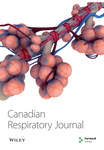Chronic Traumatic and Congenital Diaphragmatic Hernias: Presentation and Surgical Management
Abstract
BACKGROUND: The diagnosis of chronic diaphragmatic hernias, whether due to congenital defects or trauma, may be difficult to make and may rely on clinical suspicion in the setting of persistent nondiagnostic radiographic findings. Repair is indicated to avoid catastrophic cardiopulmonary compromise and/or incarceration of abdominal organs.
STUDY OBJECTIVES: To review the varied presentations and treatment of chronic diaphragmatic hernia.
DESIGN: Retrospective review.
SETTING: University of Washington and Harborview Medical Center, Seattle, Washington.
PATIENTS: Between 1997 and 2001, nine patients presented with chronic diaphragmatic hernia (two congenital cases, seven post-traumatic cases). Four cases involved the right diaphragm. The following clinical features were noted: asymptomatic, chest radiograph showing bowel herniation (n=1); chest wall mass (n=1); asymptomatic with the chest radiograph showing marked elevation of hemidiaphragm (n=1); dyspnea with the chest radiograph showing marked elevation of hemidiaphragm (n=1); diarrhea and heartburn (n=1); generalized gastrointestinal upset (n=1); recurrent pneumonia (n=2); recurring effusions (n=4); and dyspnea on exertion (n=5).
INTERVENTIONS: Diagnosis was confirmed by chest radiograph in two patients, chest computed tomography scan in one patient, barium studies in three patients and thoracoscopy in three patients. All hernias were repaired via thoracotomy, and two hernias were repaired with artificial patch.
CONCLUSIONS: Patients with chronic diaphragmatic hernias present with a variety of symptoms and radiographic findings. When radiology or symptoms suggest bowel involvement, barium studies are appropriate. In other cases, chest computed tomography scans and/or thoracoscopy are useful. Repair is accomplished through the ipsilateral chest, with primary repair of the diaphragm preferred over patch repair.




